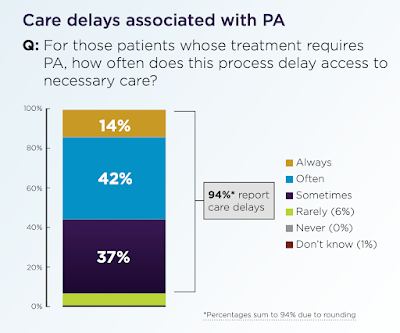By: Ranier Simons, ADAP Blog Guest Contributor
Adherence to medication is one of the most important tenets of antiretroviral therapy (ART) for people living with HIV (PLWH). Adherence is taking the appropriate medications in the proper dosages on the correct schedule. Reaching an undetectable viral load requires strict adherence, with which many PLWH have difficulty for various reasons. The recent innovation of long-acting injectables (LAI) is an attempt to strengthen adherence for PLWH who have difficulty with pill regimens. In January 2021, the U.S. Food & Drug Administration (FDA) approved Cabenuva, the first injectable drug combination for HIV.[2,5] GSK recently released results from clinical trial data indicating Cabenuva works better than daily pills for patients with adherence challenges.[1,4,5,6]
 |
| Photo Source: Pharmalive |
Cabenuva is a two-injection regimen of cabotegravir and rilpivirine administered either once a month or once every two months.[7] This month, GSK released data from the LATITUDE (Long-Acting Therapy to Improve Treatment Success in Daily Life) study comparing the efficacy of Cabenuva in contrast with daily pill regimens regarding adherence.[1] The screened participants were verified as having challenges with ART adherence. They were initially given a three-drug oral ART regimen, receiving comprehensive and incentivized adherence support.[1] Once they were virally suppressed, they were randomly selected to receive Cabenuva injections every four weeks or continue with daily pill therapy.[1] The strong evidence of superior efficacy of Cabenuva over daily pill therapy led the Data Safety Monitoring Board (DSMB) for Advancing Clinical Therapeutics Globally for HIV/AIDS and Other Infections (ACTG) to recommend removal of the randomization and offer all participants the option to take Cabenuva.[1]
This new development is an optimistic win in the fight against HIV. Joey Wynn, activist and chair of the ADAP Long-Acting Injectables Patient Advisory Committee, states, “Although definitely not for everyone, this is the next phase of evolution in HIV therapy. Injections allow us to get on with our lives and not be weighed down with the daily burden of taking pills.”
There are many reasons daily pill therapy adherence is a challenge for some. Psychologically, taking daily pills is a reminder of disease that is too much for some to handle. There are people with developmental challenges who can't keep up a daily regimen. Stigma and privacy are adherence challenges for PLWH in living situations that are not safe or supportive, where the discovery of medication bottles is not ideal or dangerous.[2,3]
 |
| Photo Source: NIAID |
As Riley Johnson, project manager for ADAP Advocacy's Long-Acting Injectables Project, points out, “LAIs can mean consistent medication instead of having meds lost or stolen and having to navigate bureaucratic hoops to pursue replacement.”
While very promising, Cabenuva does have hurdles to its implementation. Presently, there are three main criteria to be eligible for Cabenuva. It is only approved for PLWH who are virally suppressed, have documented absence of resistance to either cabotegravir or rilpivirine, and have no prior antiretroviral treatment failures.[2] Viral suppression requires adherence to oral medication, which is the challenge LAIs were created to remedy. In 2019, the Centers for Disease Control & Prevention (CDC) estimated that only 56.8% of PLWH were virally suppressed or undetectable.[2] This means that less than half of PLWH in the U.S. would qualify for Cabenuva.
Just as with pill regimens, cost is also a hurdle for widespread adoption. The wholesale acquisition cost of the initial/loading dose is $5,940, and monthly/maintenance injections are $3,960.[5] Insurance companies must approve Cabenuva before patients can begin therapy. This is an access issue for those who do not have medical insurance. It is also an access issue for those with insurance because some insurance companies do not have an official classification of Cabenuva as a pharmaceutical or healthcare benefit. Thus, even though ViiV Healthcare has a payment assistance program for those who have commercial insurance, the lack of clarity of benefit status means ambiguity in which costs will be billed to patients and which to insurance companies.[2]
Studies have shown that multiple social determinants of health affect many patients' ability to maintain adherence regarding pill regimens. The same challenges apply to Cabenuva. Cabenuva must be administered in a healthcare setting by a health professional. Even though the visits would only be monthly or bi-monthly, that still poses a challenge for PLWH who lack reliable and affordable transportation. While pill forms of the medications are available for emergency doses if a patient misses an injection, on-time injections of Cabenuva are imperative to ensure resistance to either of the components does not occur.[2] Shipping doses of emergency medication is not viable for people with unstable housing or living situations where receiving medication is not optimal.
 |
| Photo Source: HIV.gov |
Widespread adoption of Cabenuva also requires providers to adopt changes. Currently, with HIV healthcare, patients on established therapy only see their infectious disease doctors once or twice a year, and the responsibility of pill treatment adherence is on the patient. With Cabenuva injections, the facility's operational flow is disrupted since the injections require more frequent visits. Additionally, responsibility is added to the medical practices by ensuring patients do not miss their injection appointments and following up with them when they do. Moreover, practitioners must be trained in the z-track injection technique required for the intramuscular injection and have proper refrigeration equipment to store the Cabenuva between 2°C and 8°C.[8]
The recent data from the Cabenuva trial is a promising step in the right direction, though not without its challenges. Joey Wynn adds, “Understandably, there are issues of access for those on private insurance, clinic flow issues, and limited distribution shortages, meaning advocates need to demand improved pipeline delivery from the manufacturer so people can get what they need/want/require with less difficulties.” Riley Johnson adds, “no degree of adherence is possible if the medication is not available or accessible.” To ensure the success of the LAI landscape, policy and holistic community support will be required to keep up with the advances of science.
[1] GSK. (2024, February 21). Press release: LATITUDE phase III interim trial data indicates ViiV Healthcare’s long-acting injectable HIV treatment Cabenuva (cabotegravir + rilpivirine) has superior efficacy compared to daily therapy in individuals living with HIV who have adherence challenges. Retrieved from https://www.gsk.com/en-gb/media/press-releases/latitude-phase-iii-interim-trial-data-indicates-cabenuva-has-superior-efficacy-compared-to-daily-therapy/
[2] Pinto, R. M., Hall, E., & Tomlin, R. (2023). Injectable Long-Acting Cabotegravir-Rilpivirine Therapy for People Living With HIV/AIDS: Addressing Implementation Barriers From the Start. The Journal of the Association of Nurses in AIDS Care: JANAC, 34(2), 216–220. https://doi.org/10.1097/JNC.0000000000000386
[3] Simoni, J. M., Tapia, K., Lee, S. J., Graham, S. M., Beima-Sofie, K., Mohamed, Z. H., Christodoulou, J., Ho, R., & Collier, A. C. (2020). A Conjoint Analysis of the Acceptability of Targeted Long-Acting Injectable Antiretroviral Therapy Among Persons Living with HIV in the U.S. AIDS and Behavior, 24(4), 1226–1236. https://doi.org/10.1007/s10461-019-02701-7
[4] Hart, R. (2024, February 21). First long-acting injectable HIV treatment works better than daily pills for some patients, GSK says. Retrieved from https://www.msn.com/en-us/health/other/first-long-acting-injectable-hiv-treatment-works-better-than-daily-pills-for-some-patients-gsk-says/ar-BB1iDCzR?ocid=socialshare
[5] Bernstein, L. (2021, January 22). FDA approves breakthrough injectable HIV medication. Retrieved from FDA approves breakthrough injectable HIV medication
[6] Liu, A. (2024, February 21).GSK’s long-acting HIV med Cabenuva beats daily therapy in patients who've faced adherence hurdles. Retrieved from https://www.fiercepharma.com/pharma/cabenuva-trial-modified-gsks-long-acting-hiv-med-beat-daily-therapy-patients-adherence
[7] VIIV Healthcare. (2024, January). Cabenuva. Retrieved from https://www.cabenuva.com/
[8] De Vito, A., Botta, A., Berruti, M., Castelli, V., Lai, V., Cassol, C., Lanari, A., Stella, G., Shallvari, A., Bezenchek, A., & Di Biagio, A. (2022). Could Long-Acting Cabotegravir-Rilpivirine Be the Future for All People Living with HIV? Response Based on Genotype Resistance Test from a Multicenter Italian Cohort. Journal of personalized medicine, 12(2), 188. https://doi.org/10.3390/jpm12020188
Disclaimer: Guest blogs do not necessarily reflect the views of the ADAP Advocacy Association, but rather they provide a neutral platform whereby the author serves to promote open, honest discussion about public health-related issues and updates.










